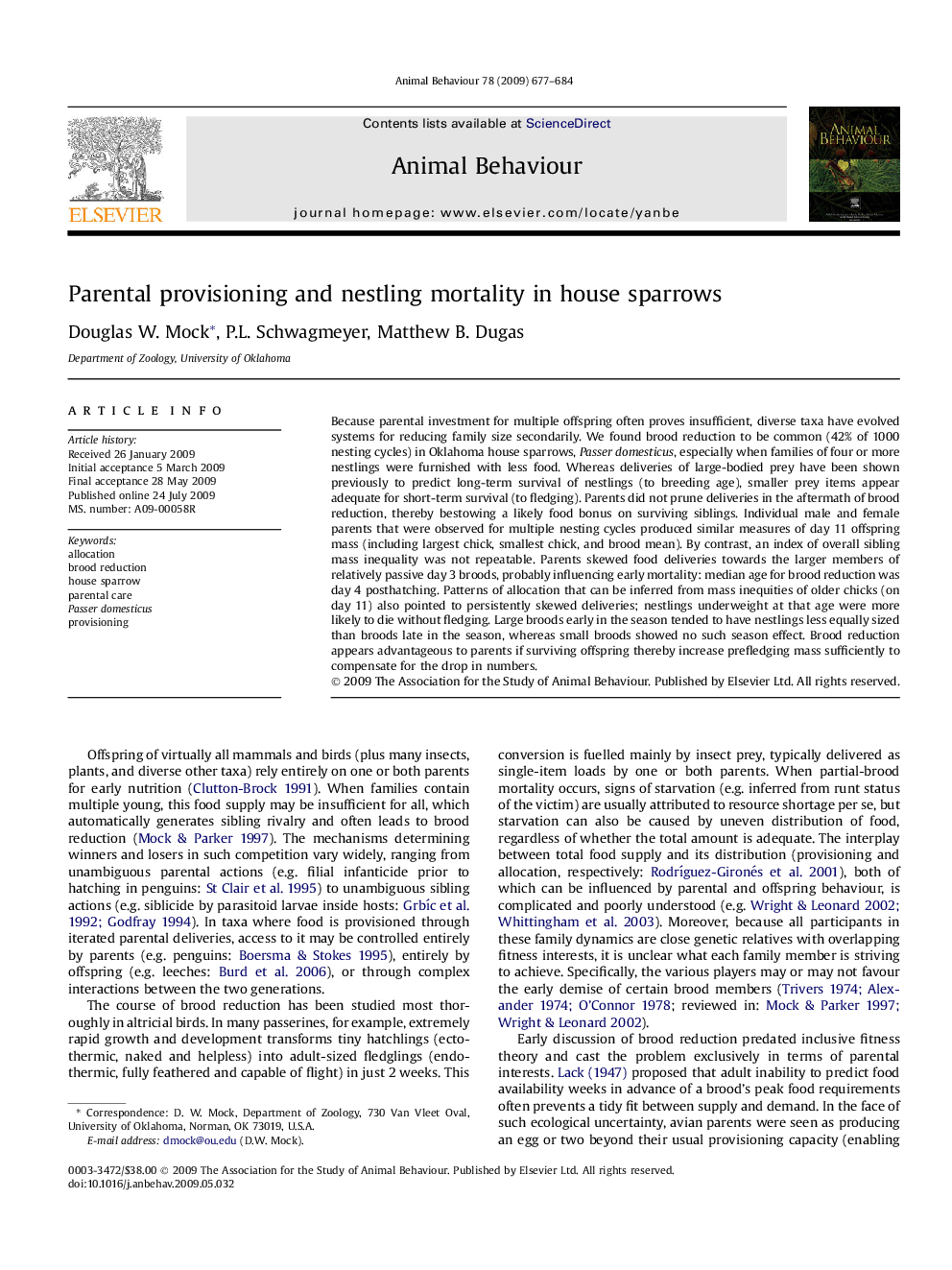| Article ID | Journal | Published Year | Pages | File Type |
|---|---|---|---|---|
| 2417331 | Animal Behaviour | 2009 | 8 Pages |
Because parental investment for multiple offspring often proves insufficient, diverse taxa have evolved systems for reducing family size secondarily. We found brood reduction to be common (42% of 1000 nesting cycles) in Oklahoma house sparrows, Passer domesticus, especially when families of four or more nestlings were furnished with less food. Whereas deliveries of large-bodied prey have been shown previously to predict long-term survival of nestlings (to breeding age), smaller prey items appear adequate for short-term survival (to fledging). Parents did not prune deliveries in the aftermath of brood reduction, thereby bestowing a likely food bonus on surviving siblings. Individual male and female parents that were observed for multiple nesting cycles produced similar measures of day 11 offspring mass (including largest chick, smallest chick, and brood mean). By contrast, an index of overall sibling mass inequality was not repeatable. Parents skewed food deliveries towards the larger members of relatively passive day 3 broods, probably influencing early mortality: median age for brood reduction was day 4 posthatching. Patterns of allocation that can be inferred from mass inequities of older chicks (on day 11) also pointed to persistently skewed deliveries; nestlings underweight at that age were more likely to die without fledging. Large broods early in the season tended to have nestlings less equally sized than broods late in the season, whereas small broods showed no such season effect. Brood reduction appears advantageous to parents if surviving offspring thereby increase prefledging mass sufficiently to compensate for the drop in numbers.
